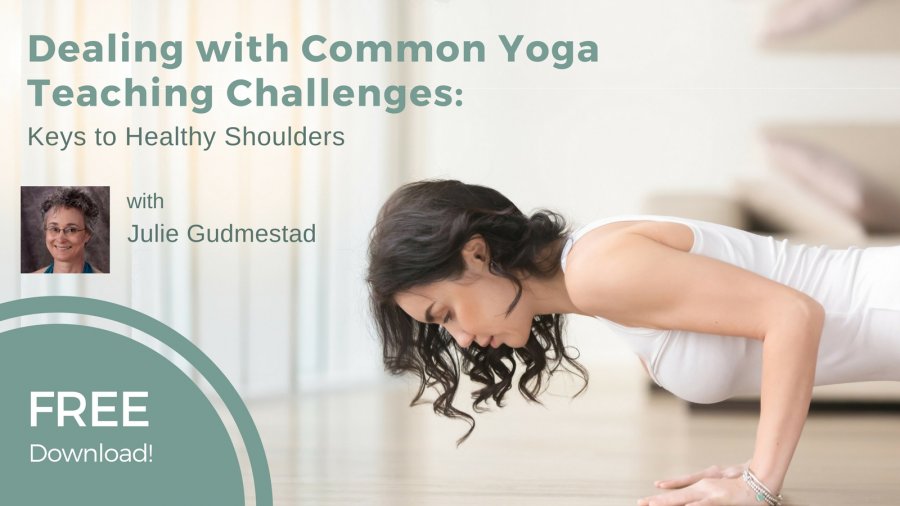Free Download! Dealing with Common Yoga Teaching Challenges: Keys to Healthy Shoulders
Course Info
- Price:
- $0.00
Julie Gudmestad
 Julie Gudmestad, PT, C-IAYT has been active in Portland, Oregon, as a yoga teacher and licensed physical therapist for over 40 years. She has integrated her western medical knowledge with yoga training into a unique teaching style, and regularly teaches anatomy and asana workshops throughout...
Julie Gudmestad, PT, C-IAYT has been active in Portland, Oregon, as a yoga teacher and licensed physical therapist for over 40 years. She has integrated her western medical knowledge with yoga training into a unique teaching style, and regularly teaches anatomy and asana workshops throughout... 
One of the common problems facing yoga teachers, says Julie Gudmestad in this free download, are students coming to class with health issues that require individual attention. This is especially the case now that the health benefits of yoga are becoming more widely known.
However, while yoga has numerous health benefits, incorrectly practiced yoga can lead to muscle strain or injuries. Even for students without health issues, beginners often push themselves inappropriately and attempt to do poses beyond their ability.
A main area of concern, Julie notes, are women who come to yoga with low upper body strength. The shoulder is very mobile, which allows us to do a variety of yoga poses with the arms in a variety of positions. However, because the shoulder is so mobile, it sacrifices stability.
As a consequence, the shoulder is very dependent on soft tissue to stabilize the ball in the socket and to stabilize the shoulder blade, which forms the socket.
If we begin yoga without proper strength work, and go into the iconic, weight-bearing yoga poses on our arms, the muscles are not strong enough to stabilize the joint, and we set ourselves up for joint issues or tendon strains. Strained muscles and tendinitis are common, and shoulders are also prone to bursitis.
Julie discusses the best ways to build up the strength to safely practice common weight- bearing yoga poses on the arms. She further talks about the rotator cuff and why rotator cuff injuries are so common. According to Julie, keeping the rotator cuff strong, whatever your age, is the best way to avoid rotator cuff injuries, and this is where yoga has much to offer. Certain poses in the right alignment can do an excellent job of working the rotator cuff.
It’s important for teachers to understand basic shoulder anatomy to ensure healthy shoulder function, Julie notes. Building up strength in the shoulders and then applying it with alignment and awareness in increasingly challenging, weight-bearing positions is key to keeping the shoulders safe as we progress in our practice.
Also check out Julie's course on YogaUOnline: Yoga Anatomy: Keeping the Rotator Cuff Healthy in Yoga.